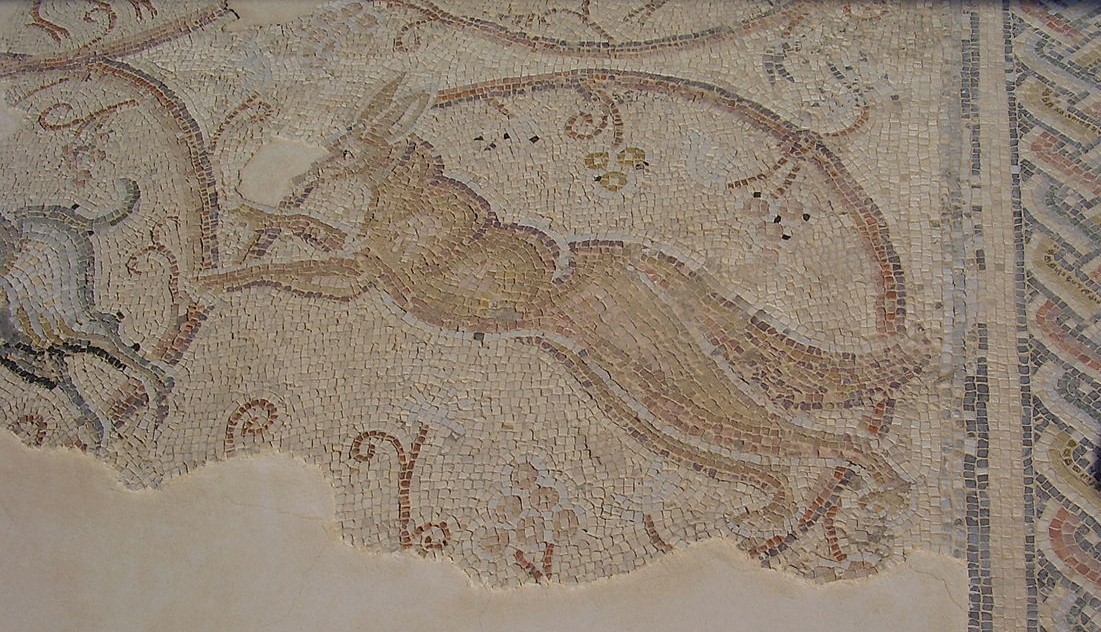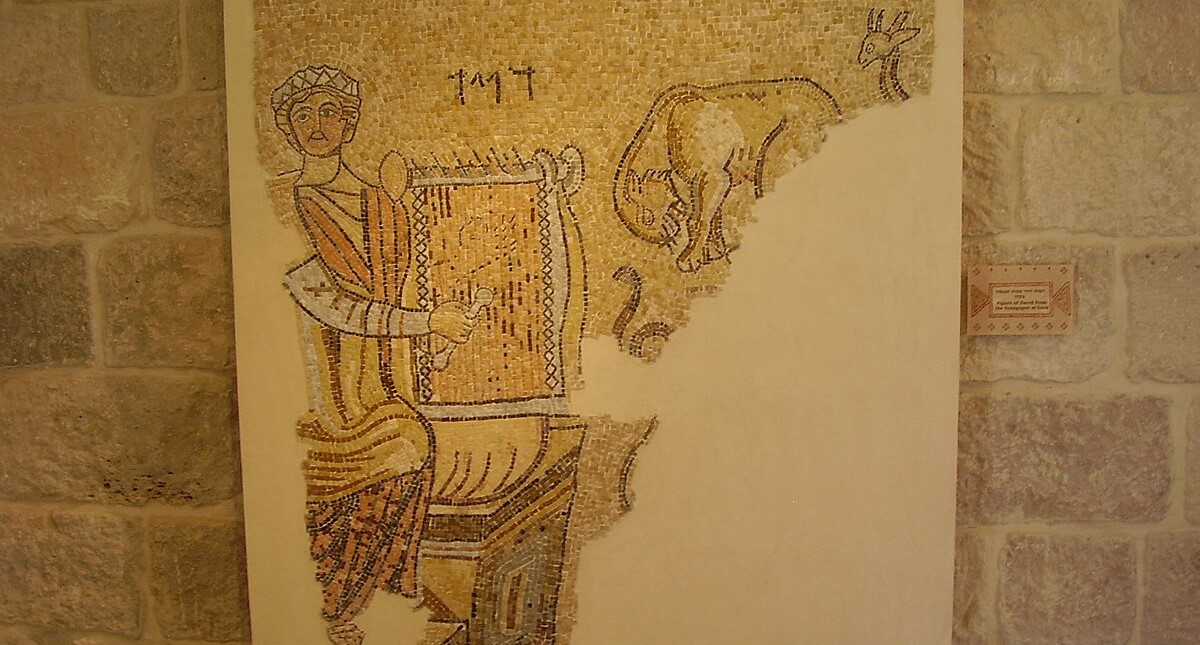
Decorative floor mosaic from ancient Gaza synagogue, today kept at the Museum of the Good Samaritan in the West Bank (Photo: Avishai Teicher/Wikipedia PikiWiki Israel license CC BY 2.5)
The ancient synagogue of Gaza dates back to 508 CE and is located in what was a bustling port city at the time known as "Maiuma" or El Mineh, today in the Rimal district of Gaza City. It was discovered in 1965 by Egyptian archaeologists and came under Israeli control following the 1967 Six-Day War.
Both Hebrew and Greek writing was incorporated into the building's decor, in addition to Greek and Byzantine artistic influences. The synagogue stands as an important testament of Jewish life in the Land of Israel in the 6th century, showing a Jewish presence even after the Roman expulsions centuries prior.
The synagogue also had stunning, intricate floor mosaics of animals and natural life as well as one of King David playing the harp and featuring Hebrew lettering. After the discovery some of the mosaics were deliberately damaged and vandalized in antisemitic attacks, and so after 1967 they were moved to Jerusalem for restoration by scholars at the Israel Musem. Today they are displayed at the Museum of the Good Samaritan near Ma'ale Adumim in the West Bank.
Relocating the historic and magnificent mosaics ended up being a wise move, as the site of the Gaza synagogue itself has been inaccessible to Jews since the Israeli withdrawal from Gaza in 2005. That makes the rediscovery of the site by IDF soldiers all the more special, particularly as confirmation that it is remarkably still standing today!
Are you inspired by ancient Jewish history and by the brave defenders of Israel today? Show your pride with our Israel Army Gifts and Support Israel Collection!


















